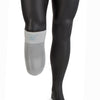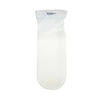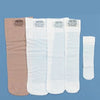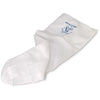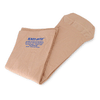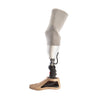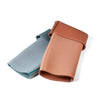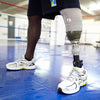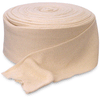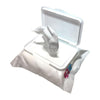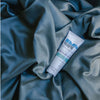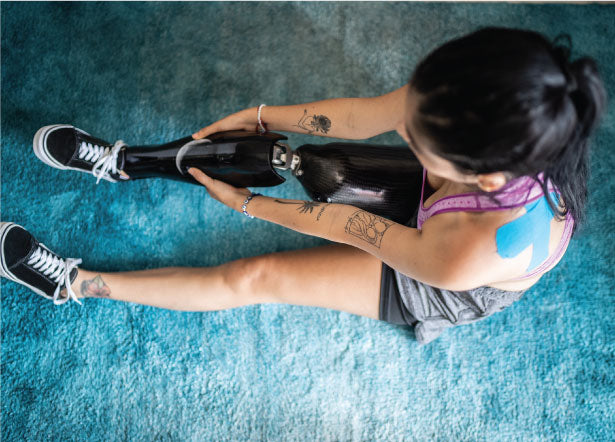The Complete Prosthetic Sleeve Suspension Guide
Sleeve suspension is technique used by Prosthetists to create union between you and your prosthesis. Suspension sleeves are typically designed for Below Knee and Below Elbow amputees. The majority of suspension sleeves are either rolled onto a user's thigh or upper arm providing suspension through vacuum, suction and/or compression. Manufacturers design sleeves using various materials ranging from knitted textiles, polyurethane gel, copolymer gel, silicone and neoprene. Many active weekend warriors or those who are on vacation and plan on walking a lot will use their BK sleeves as a secondary means of suspension. Sleeves can also be used in combination with other systems such as prosthetic cushion liners and Suctions Systems or Vacuum Systems such as Ottobock's Harmony System.
There are basically two suspending techniques in which sleeves employ:
Below Knee Leg Sleeves create an air tight seal between your skin and prosthetic socket. In order to maintain suction suspension your sleeve must extend past any supplies, ie your prosthetic liner and prosthetic socks. Suction sleeves are typically constructed from neoprene or similar rubber materials. Knitted textiles are not capable of maintaining suction suspension due to air escaping through its fibers. Silicone and various types of gels sleeves are capable of creating suction suspension. Creating an environment conducive to suction suspension is as simple as applying a neoprene sleeve and having it in direct contact with your thigh. This is a popular means of suspending your prosthetic leg due to its simplicity. If your prosthesis begins to move downward during swing phase of walking a suction environment is created and the weight of air or atmospheric pressure maintains suspension. As with vacuum sleeves, a small hole will introduce air into the system causing your limb to feel heavy, introduce "pistoning" and in some cases creating friction related skin conditions. A suction sleeve is not recommended if you have difficulties with your hands or arm strength in general. One exception for those with hand strength is the Syncor Dura EZ Sleeve.
A complete Suction System incorporates a one-way valve, cushion gel liner and a sealing suspension sleeve with option sleeve saver. Once you've put on your prosthetic liner, stepped into your prosthesis and rolled on your sleeve, simply standing and applying body weight helps expel excess air through a one-way valve. As you walk excess air is continuously expelled through the valve.
A vacuum sleeve creates a seal around the top edge of your prosthetic socket, then a vacuum pump and exhaust valve remove virtually all air between your prosthetic socket and liner as you wear them. The prosthetic system regulates the vacuum level within a defined range set by the manufacturer. Prosthetic vacuum enhances how well your prosthetic socket adheres to your residual limb, which reduces shear, regulates volume (size) changes and improves circulation in your limb. The high level of connection also improves performance and safety because it gives you a secure, intimate fit from the time you put on your prosthesis in the morning until you take it off at night. Similarly to suction systems, any pin holes in your sleeve will introduce air into the system, making your prosthetic leg feel exceedingly heavy. Vacuum is considered to offer the greatest suspension performance available to amputees followed by suction suspension.
Dig deeper find related buying articles:
- What is the difference between Vacuum and Suction suspension systems?
- Which prosthetic sleeve features are important to amputees.
- Prosthetic sleeves that offer the longest life.
- Helpful tips for your prosthetic sleeve
- How-to install a Below-Knee Sleeve onto my prosthesis?
- How-to protect and care for suspension sleeves.
- Prosthetic Sleeve Materials Primer














































